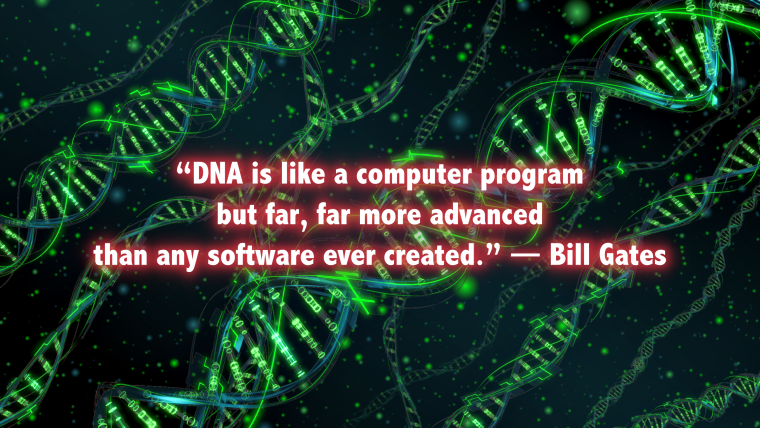Imagine a world where instead of using a hard drive, you store your data in your own genes: up to 1,000,000,000 TB in a speck on your hand.
Science fiction? Not quite. Big name companies like Microsoft believe DNA data storage is the future, and are investing heavily into it.
The reason is simple: the digital data we need to store is increasing at an unsustainable rate for our current hardware. Remember when we used to use floppy disks for everything?
In 1981, Bill Gates famously said “640K ought to be enough for anybody”. Now, Microsoft believes that is simply not the case.
This effect is known as Kryder’s law: that magnetic disk storage density doubles approximately every 18 months. It’s the data storage equivalent of Moore’s law.
DNA Data Storage: A Solution to Kryder’s Law
DNA can hold a whopping amount of information. One gram of DNA can hold close to 1 billion terabytes—or 1 zettabyte—of data.
According to Cisco, this is about the total size of the internet in 2016—as the total internet traffic of the world has just entered the ‘Zettabyte era’. So you could store the entire internet. In a gram.
DNA is also remarkably resilient. Unlike our current data storage technology, it can last for thousands of years and still successfully be sequenced.
The thing is, DNA data storage isn’t a brand new concept. It was first thought up by a Soviet Physicist, Mikhail Neiman, in the 1960’s. It’s only now that we’re able to practically consider implementing it.
And it’s not as far away as you’d think. Binary data has already been successfully stored as DNA base pairs. Twist Bioscience, a biology startup bought out by Microsoft, can already produce custom strings of DNA using a machine.

DNA Data Reading is Getting Cheap
Reading the data uses genetic sequencing—the same technique used in the human genome project in the 90’s to map our DNA for the first time.
And the price of doing this has drastically decreased. Back then, it cost $3 billion. Today? Just $1000.
Every year, the commercial viability of DNA data storage is getting cheaper. With its inherent advantages, it’s not hard to imagine a future where your computer is part biology, part technology.
Is DNA Data Storage our Future?
All of this begs the question; will we be our own data storage devices in the future, with the internet literally stored in our fingertips? It very well may be in a decade or two’s time, we consider carrying around pen-drives around too much work. After all, it’s hard to lose your own DNA down the back of the couch.
In the meantime, we suggest using BackupAssist to protect your conventional data. We’re not all quite cyborgs yet. (Though that could be argued)
How do you feel about a world where long term data archiving uses the same technology as life itself?
Leave your thoughts in the comments, tweet @BackupAssist or post to facebook.



